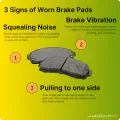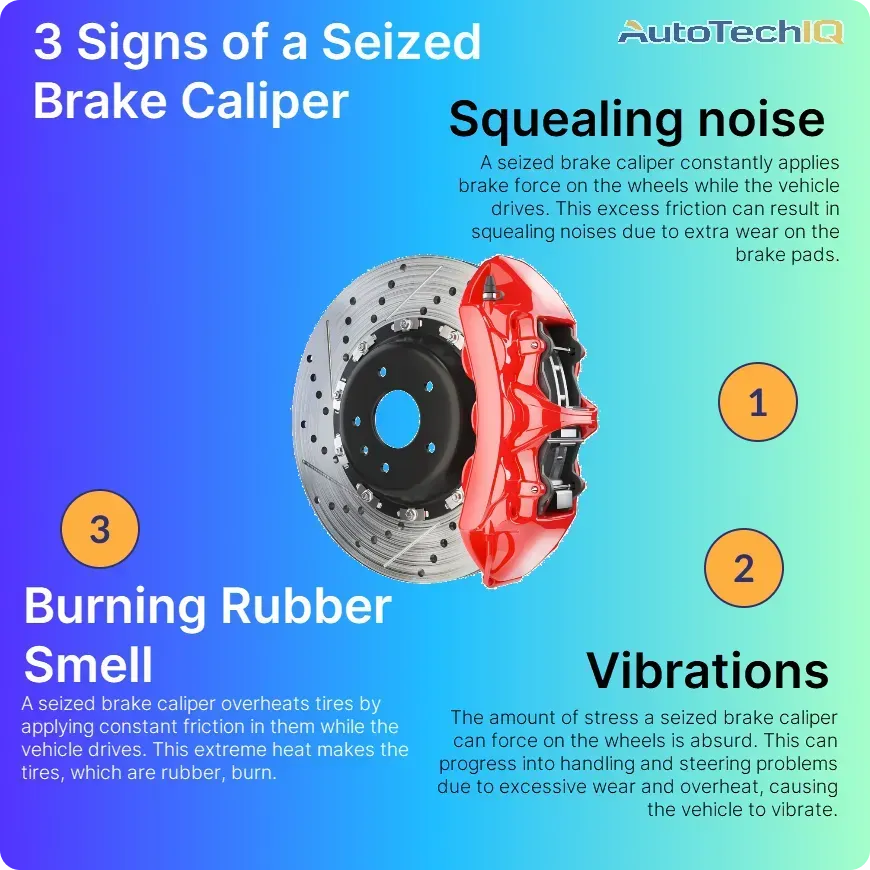

The biggest sign that one of your vehicle's brake calipers is seized is noticing a slight pull to one side while driving. A seized brake caliper keeps the brake pads partially applied, causing the wheel to brake constantly. This results in the vehicle being unable to drive straight, as it'll slightly pull to the braking wheel's side.
Brake calipers are part of the brake system and interact directly with the vehicle's wheels. They're no joke in providing you with safety and performance while driving, but they too can show bad symptoms.
- Key function: A brake caliper is one of the many brake components that ensure your vehicle actually stops. It works by pushing brake pads on the brake rotor, increasing friction and forcing the wheel to spin slower.
Therefore, it's no surprise that a seized brake caliper is a loose cannon on road safety.
- Safety: A seized brake caliper will remain partially applied, causing constant friction on its wheel. This means the wheel meets resistance as it spins, making the vehicle pull to one side, overheating the tires, and risking a bigger brake failure eventually.

Vehicle pulling to one side
A seized brake caliper constantly applies the brakes on its wheels. So, if the vehicle is driving and one of its front wheels is slightly braking compared to the others, the vehicle won't drive straight.
If one wheel is spinning less, the vehicle starts pulling to that wheel's side. This means the extra friction on the brake rotor, brake disc, wheel hub, and brake pads is slightly steering the vehicle as it tries to drive straight.
Burning rubber smell
A seized brake caliper will constantly apply force on the wheels. This means that the brake pads, brake discs, brake rotors, and tires will get friction all the time while driving.
This amount of high friction in a constant fashion gets tires extremely overheated. Consequently, these tires can reach damaging high temperatures, where they burn and melt.
Since tires are rubber, the high heat makes them release a burning rubber smell, leaving bulges, blisters, rotor heat marks, etc.
Other signs
- Sluggish driving
- Squealing noise
- Uneven brake pad and tire wear
- Soft or stiff brake pedal
- Brake fluid leaks
- Steering wheel vibration
Possible fixes
- Brake caliper bracket replacement: The caliper bracket holds the caliper in place and ensures proper alignment with the rotor. If a caliper seizes, the bracket may be damaged or warped, requiring replacement to maintain the correct braking function.
- Brake System Upgrade: A seized caliper indicates that the braking system may be underperforming or outdated. Upgrading the brake system can provide better performance, reliability, and safety, ensuring all components work harmoniously.
- Front brake calipers/pads/rotors replacement: When a caliper seizes, it can cause excessive wear or damage to the brake pads and rotors. Replacing these components along with the calipers ensures the entire front braking system is restored to optimal condition.
- Replacing Brake Rotor: A seized caliper often leads to uneven wear or scoring on the brake rotor, compromising its effectiveness. Replacing the rotor ensures a smooth, even surface for the new pads and caliper to engage with, improving braking performance.
- Caliper slide pins cleaning and lubing: Seized calipers can result from dirty or corroded slide pins, which prevent proper caliper movement. Cleaning and lubricating these pins and the caliper piston is essential to ensure the new caliper operates smoothly and reliably.
- Caliper replacement: The most direct solution to a seized caliper is replacing the faulty caliper itself. This restores proper braking function and eliminates the issues caused by the seized component, ensuring safe and effective braking.
Frequently Asked Questions
Can you unseize a brake caliper?
While attempting to "unseize" a brake caliper yourself is possible with some mechanical knowledge and the right tools, it's not guaranteed to be a permanent fix. The root cause of the brake caliper seizing (usually corrosion) might remain, and the caliper could seize again. For safety reasons, it's generally recommended to consult a mechanic to diagnose the severity and determine if a repair or a replacement of the caliper is necessary.
Can I drive if my brake caliper is sticking?
No, driving with a stuck brake caliper is highly discouraged. It compromises your braking ability, wears down parts unevenly, and can overheat causing a potential fire. When a brake caliper seizes, the entire brake system is at risk of breakdown. It's best to have a mechanic inspect the front and rear brakes as soon as possible for your safety and to prevent further damage to your car.
How often do brake calipers need to be replaced?
Brake calipers are typically very durable and can last anywhere from 75,000 to 100,000 miles, or even the lifetime of the vehicle. However, this can vary depending on driving habits, environment, and maintenance factors like replacing brake fluid. Instead of a mileage schedule, look for warning signs like uneven pad wear, pulling, or grinding noises to determine if your calipers need attention.
Other news
-
Car is Squealing When Driving

-
What is Preventative Maintenance and What Are The Benefits of it?

-
JobViewIQ - DVI Process Training - Part of the Auto Care Alliance Benefits

-
7 Signs of Clogged AC Components
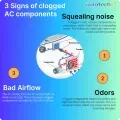
-
How Much Does a Transmission Fluid Change Cost?
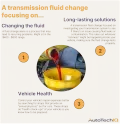
-
7 Signs of a Leaking Axle Seal
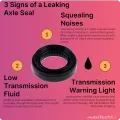
-
8 Signs of a Bad Brake Pad
